BougeRV Yuma 100W Solar Panel Review
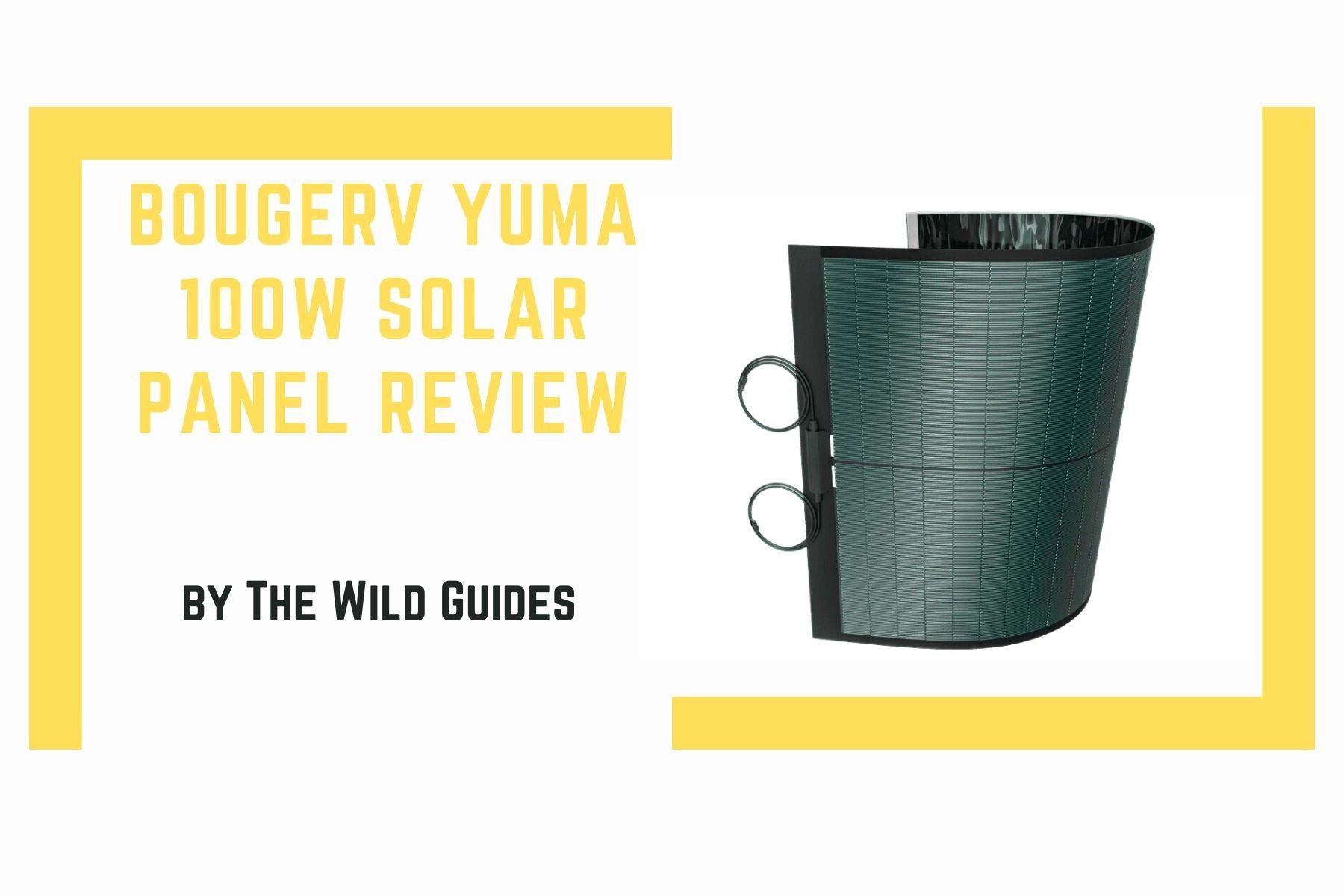
This review for the BougeRV Yuma 100w is for fellow campers and outdoor enthusiasts who want an efficient yet lightweight and durable solution for charging up their power stations during their nature escapades:
Quick Summary of the BougeRV Yuma 100W
The BougeRV Yuma 100W is made of Copper Indium Gallium Selenide or CIGS – the newest technology is solar panels. What sets the CIGS technology apart from regular solar panels is its bendability and weight.
The 50µm stainless steel foil and a 2.5µm conductive layer make it extremely thin. Its weight is just a meagre 4.30lbs and it is 360 degrees bendable. Plus, the installation is extremely easy with adhesive at the back – no mechanical installation required.
*The Wild Guides is reader-supported. When you buy through links on my site, I may earn an affiliate commission at no extra cost to you. Learn more*
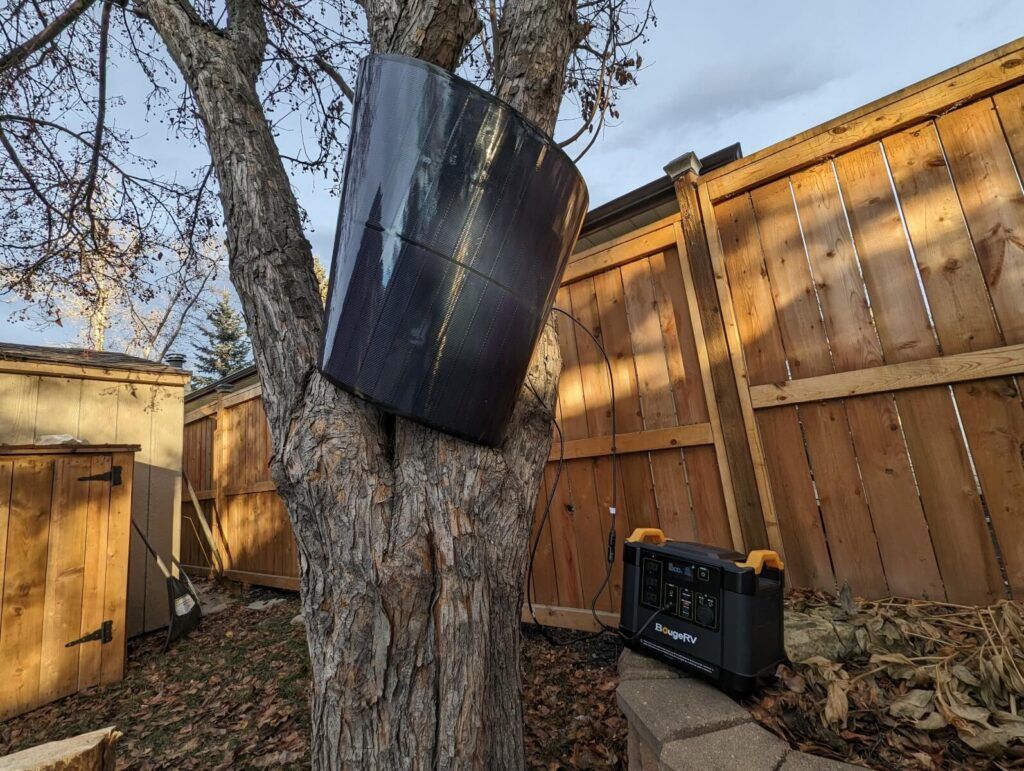
But there’s still more!
The BougeRV Yuma, unlike regular solar panels, hardly gets damaged. The solar cell efficiency of the BougeRV Yuma also makes it possible to generate 38% more power than regular solar panels during cloudy weather conditions. However, it proves its conversion efficiency in sunny weather when you can fully charge up a BougeRV Fort 1000 within 4 hours!
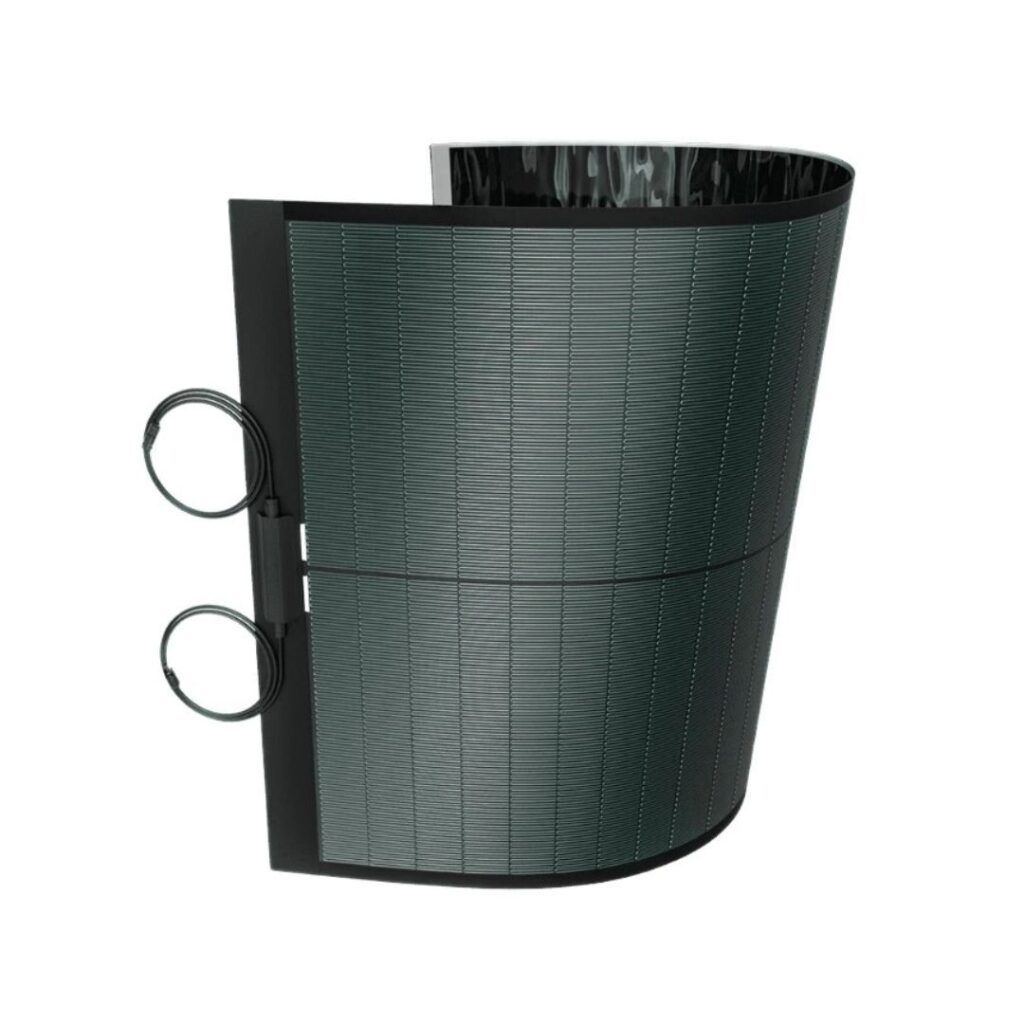
Now that we’ve had an overview of the BougeRV Yuma’s features, let’s delve into the details so you can make an informed choice before making this investment!
Size
The BougeRV Yuma is just 0.06 inches thick. Although it is 26 inches wide and 44.3 inches in length, the bendability of the panel makes it perfect for just about any surface. It fits perfectly on the curved roof of any RV and teardrop campers too. I have even used it at home on top of my garage to work on a DIY project.
Because of its bendability, size is beside the point here. You can add it to any smaller surface by curving it up and it won’t damage or affect the panel’s efficiency.
Look and Feel of the Product
Moving on, BougeRV Yuma is designed for rough use. And yet, the look of the product betrays this perception. Since the panel is extremely thin, it might come off as a flimsy product when in reality, it withstands any impact that you would expect to cause damage.
Firstly, the adhesive on the back of the panel is super strong. It sticks to the surface without the need for brackets and drilling – delivering a hassle-free and worry-free experience.
Secondly, the panel’s CIGS cells allow it to bend. So, when you bend it or curve it up, it won’t crack like monocrystalline solar cells do. Plus, you can wrap this thing up and set it up again, and it would still work as efficiently as it did the first time you installed it.
Efficiency
What particularly amazed me was BougeRV Yuma’s excellent performance during cloudy weather. I once tested it off-grid where the weather was quite cloudy, but I still got 180 watt-hours in 8 hours of cloudy weather – enough to power my portable fridge for the night.
What’s more is that it has a higher conversion efficiency, especially compared to regular solar panels. Not to mention, it also delivers uncompromising durability, which gives a higher return on investment over time.
Another notable feature of the BougeRV Yuma is its ability to perform even if damaged, unlike monocrystalline solar cells that need replacement even at the slightest crack. You can expect your CIGS solar panel to last more than a decade because of its durability.
The 12-year warranty on the official BougeRV website is proof that this technology is built to perform!

The Cost Factor
The best part about the BougeRV Yuma 100w is the price. At a meagre price of $235.19 (if you use the code “Bougerv”, you get 16% off!!!) per panel, you can get around 250-300 watt-hours of solar energy per day!
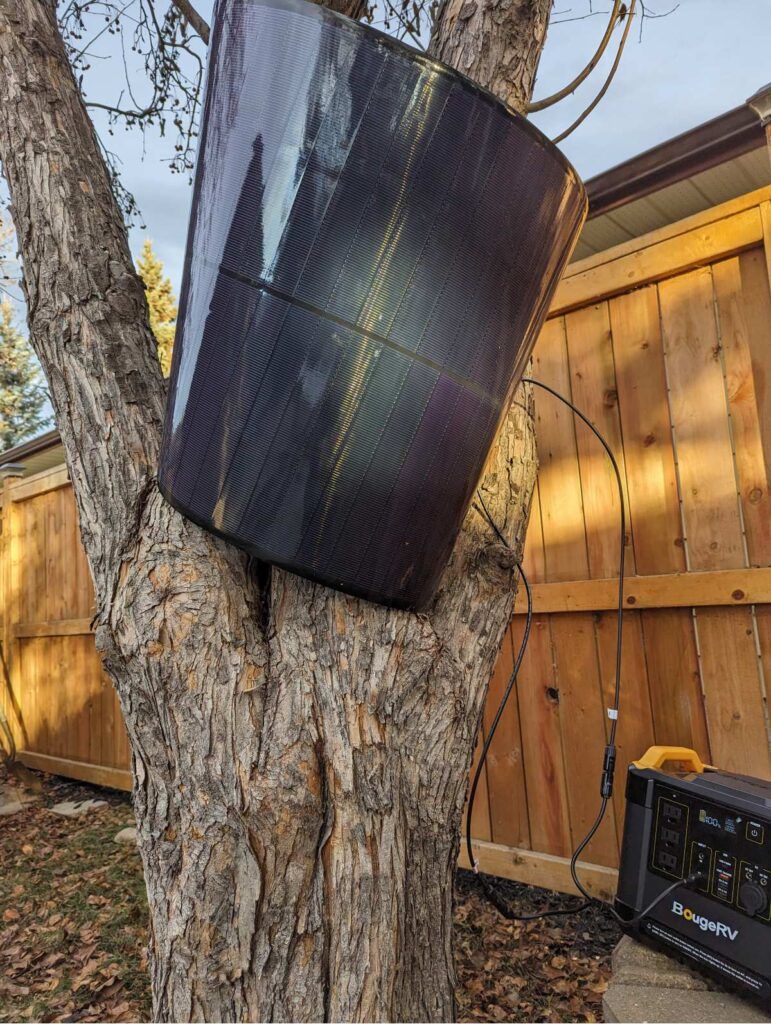
If you often travel in areas that are not particularly sunny, you could even invest in two 100w panels.
Even though that would mean double the price, the 12-year limited warranty is enough to make you worry-free about the panel’s performance and durability. I am sure that the BougeRV Yuma will keep illuminating my camping adventures for years to come.
Comparison with Other Solar Panels
When I was surveying BougeRV for solar panels, I came across different kinds of them. Although I haven’t used these personally (yet), I can safely say that I made a great investment with the BougeRV Yuma.
The BougeRV Arch 100w fibreglass solar panel is one of the notable products in the solar panel category. While this arched product is perfect for installing on teardrop campers with its 270-degree bendability, I find that the installation is a bit of a hassle. Although it has pre-punched holes, I prefer to do only some of the effort for one trip on a rented camper. Plus, this solar panel does not have the CIGS technology, making it less durable than the BougeRV Yuma.
I also came across portable solar panels when my old solar panels failed me. And although this BougeRV 100W 12V 9BB Portable Solar Panel was cheaper, the bendability of the BougeRV Yuma is what sold me.
How BougeRV Yuma 100W Pairs Up with the Bouge RV Fort 1000 Power Station
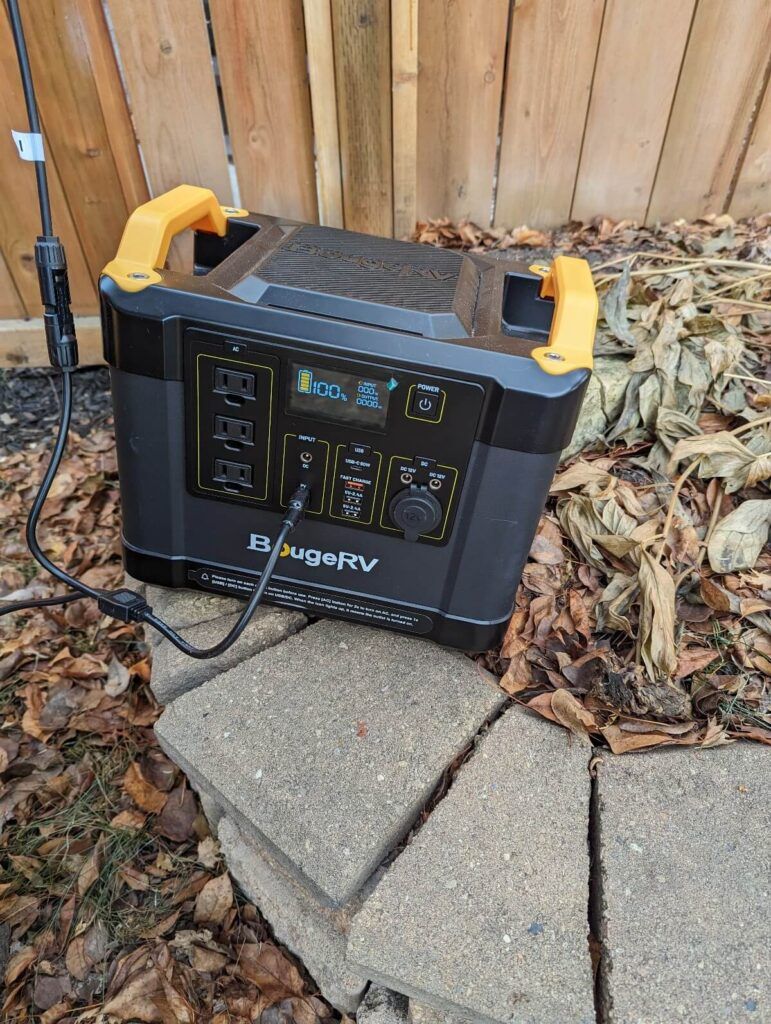
Since I am an avid camper, I have invested in the BougeRV Fort 1000 power station for backup. It’s a reasonably powerful 1120Wh, Lithium Iron Phosphate (LiFePO4) battery is what makes it worth the cost.
The battery management system (BMS) of the Bouge RV Fort 1000 is unmatched as you can be safe from overcharging on extremely sunny days when it is plugged into your BougeRV Yuma. The same defining BMS system is in the Bouge RV 1500wh which also delivers a great combination with the BougeRV Yuma.
However, since I have had personal experience with the BougeRV Fort 1000, you can view my detailed guide with coupons before you make the purchase.

Field Test of the BougeRV Yuma 100w Solar Panel
I have been a diehard camper since forever. I have been to nature parks, RV campgrounds, and off-the-grid camping for the real experience. But one thing that has always troubled me is gadget usage. In the past, there have been many times when I had to limit the number of gadgets connected to my power station to only basics because of this issue.
You see, off-grid camping is a great experience with the wilderness till you have no option but to drink room-temperature beer and stale food while the atmosphere around you is magical.
So, I was amongst the early adopters when solar panels became popularised. Although I had multiple great camping experiences with this green energy source, one bad experience made me switch.
I was wild camping once, soaking up the sun, capturing amazing pictures with my phone, and thinking that my solar panel was doing its work. It was almost evening when I thought that I’d charge my phone. But to my surprise, the solar panel wasn’t working. Frantically I began searching for the source of trouble and saw that my flexible solar panel had a crack.
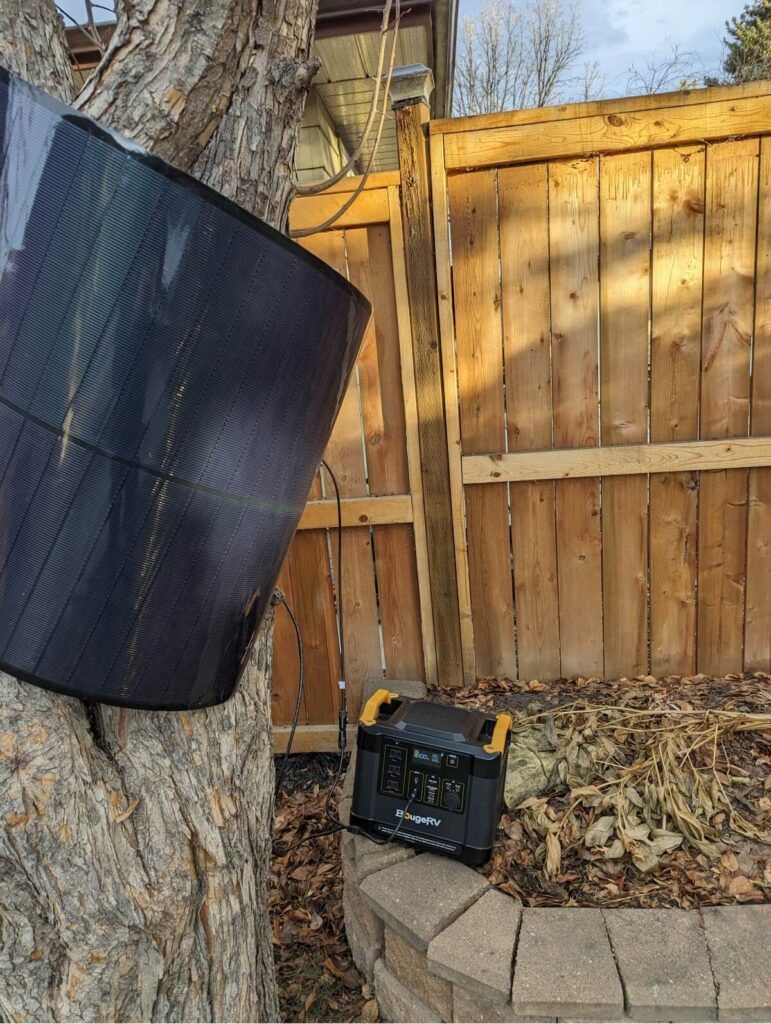
Although my camping plan went down the drain as I couldn’t capture the amazing night sky with my phone, I felt it was more of a blessing in disguise. After this small hitch in the past, I discovered the BougeRV Yuma 100W for my power station. The CIGS technology that this solar panel uses makes it astoundingly flexible, super-efficient, and amazingly durable.
I wanted to test it on one of my last camping days, as the season is nearing its end in Alberta. I went to a car camping spot searching for a place where I could set up the BougeRV Yuma. I attached it to a tree so the panels would get the little sun in the place – it was almost like there wasn’t any, but I was being ambitious.
I wasn’t expecting the Fort 1000 to charge a lot with the cold, but the BougeRV Yuma truly surprised me. Usually, on a good day, it takes up around 4 hours to charge up the Fort 1000. After 4 hours, I was surprised that BougeRV Fort 1000 was 65% charged, and we still had 3 hours to sundown. My phone was out of battery, so I plugged it into the power station in the meantime, and it was charging simultaneously!
As for the performance after sundown, I can safely say that it is times like these that make me proud of my investment in the BougeRV Yuma and the Fort 1000 as well. My portable fridge – the BougeRV 30 Quart and a night lamp was connected to the Fort 1000 through the night!
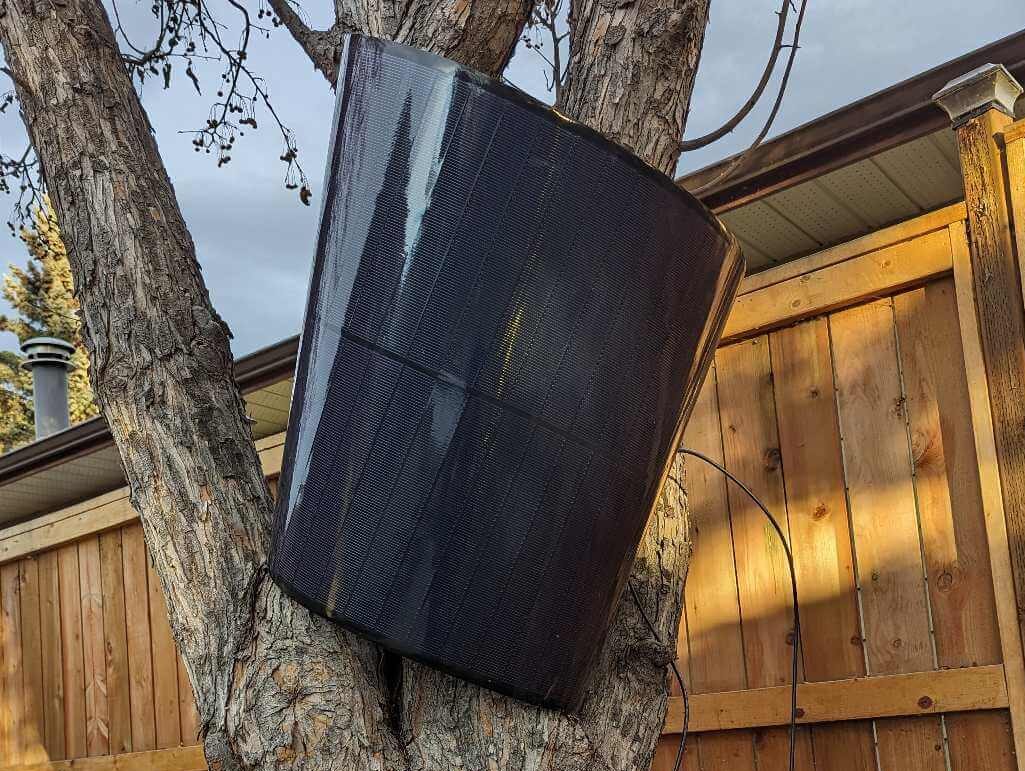
To Conclude
To sum up, the BougeRV Yuma 100w offers great value for the money. With the CIGS technology, it is the best pick for campers who must make do with an uneven surface and get electric power even on cloudy days.
I hope you found this article helpful. Please leave a comment below if you have anything to add or any experience to share. I would love to read your comments and help you with everything related to camping and hiking.
Make sure you check out my other reviews and articles on hiking, camping, and road trips if you’re a traveller like me so you can make sure to make the most of your time travelling!
